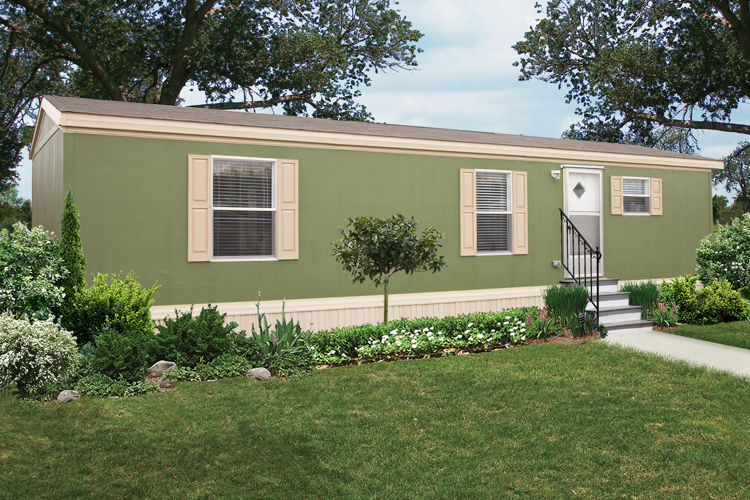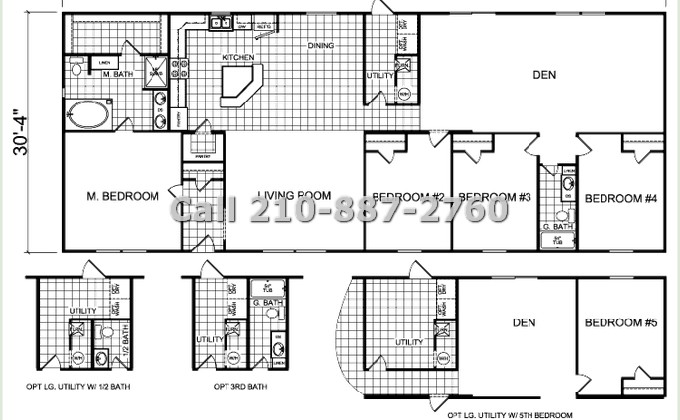Mobile homes have become a popular and affordable housing option for many, offering flexibility and cost savings. Whether you’re considering buying, selling, or moving a mobile home, understanding the process is crucial. Buying a mobile home can be an exciting yet challenging endeavor. On the flip side, selling a mobile home requires careful preparation, from enhancing curb appeal to setting the right price.
In this comprehensive guide, we’ll break down each step, providing practical insights and tips to navigate the complexities of how to buy, sell, and move mobile homes. So, whether you’re a first-time buyer, seller, or looking to move, this guide aims to simplify the complexities of mobile home transactions and empower you with the knowledge needed to make informed decisions.
How to Buy, Sell, and Move Mobile Homes
Mobile home buyers From coast to coast dream of Mobile Home Ownership. Affordability, convenience and credit play major rolls in what type of home many people decide on. Buying a small lot to install a small manufactured mobile home on is one option. There are hundreds of Manufactured mobile home dealerships nationwide, and they sell some impressive mobile homes & some not so impressive in terms of square footage, pricing & amenities.
How to Buy, Sell, and Move Mobile Homes: Buying
Buying a mobile homes involves lots of careful considerations. These often includes:
1. Identifying Personal Needs and Preferences
Before buying a mobile home, it’s crucial to identify your unique needs and preferences. Consider factors such as the number of bedrooms, desired amenities, and the location that suits your lifestyle. Understanding your personal requirements will guide you in finding a mobile home that truly meets your living expectations.
2. Setting a Budget
Establishing a clear budget is a fundamental step in the mobile home buying process. Determine how much you can comfortably afford, factoring in not only the purchase price but also potential maintenance costs and other associated expenses. A well-defined budget ensures you stay within your financial means while exploring suitable options.
3. Researching Local Regulations and Zoning Laws
Before making any decisions, take the time to research local regulations and zoning laws related to mobile homes. Different areas may have specific rules governing the placement and use of mobile homes. Understanding these regulations helps you make informed choices and ensures compliance with local laws throughout the buying process.
4. New vs. Used Mobile Homes
Decide whether you prefer a new or used mobile home. New homes offer modern features and designs, while used ones might provide cost savings. Evaluate your priorities and budget to determine which option aligns best with your needs, striking a balance between affordability and desired features.
5. Evaluating the Condition and Age of the Home
When considering a mobile home, thoroughly assess its condition and age. Look for signs of wear and tear, structural issues, and the overall maintenance of the property. This evaluation helps you make an informed decision, avoiding potential costly repairs or renovations after the purchase.
6. Considering Different Types and Sizes
Mobile homes come in various types and sizes. Assess the available options based on your lifestyle and preferences. Consider factors such as the layout, number of rooms, and overall size to find a mobile home that fits your needs and provides the desired level of comfort and functionality. A small single wide mobile home ranges in size from around 14 ft wide x 40 ft long to 18 ft wide x 64 ft long. A large single wide can be 18ft wide x 80 ft long. A Double Wide manufactured mobile home comes in small 26 x 40 sizes to large 32×80 sizes with bedroom from 3-5 and up to 3 bathrooms.
7. Hiring a Professional Inspector
Engage the services of a qualified professional inspector before finalizing your mobile home purchase. An inspector assesses the property’s condition, identifying any hidden issues or potential concerns. This step is crucial for making an informed decision and avoiding unpleasant surprises down the road.
8. Checking for Legal and Structural Issues
During the inspection, pay special attention to legal and structural issues. Ensure that the mobile home complies with local building codes and regulations. Identify any potential legal challenges and structural concerns that may impact the safety and longevity of the property.
9. Verifying Ownership and Title Information
Before proceeding with the purchase, verify ownership and title information for the mobile home. Ensure that the seller has a clear and legal title to the property, preventing complications in the transfer process. This step provides peace of mind and safeguards your investment.
10. Exploring Financing Choices
Explore various financing options available for mobile home purchases. Research lenders who specialize in mobile home financing and compare interest rates and terms. Understanding your financing choices allows you to make a well-informed decision that aligns with your financial goals and capabilities.
11. Understanding Interest Rates and Terms
When considering financing, it’s essential to understand the interest rates and terms associated with the loan. Different lenders may offer varying rates and repayment terms. Evaluate these factors carefully to choose a financing option that suits your budget and provides favorable long-term conditions.
12. Securing Pre-Approval
Before actively searching for a mobile home, secure pre-approval for your financing. Pre-approval gives you a clear understanding of your budget and makes your offers more attractive to sellers. This step streamlines the buying process and positions you as a serious and prepared buyer in the market.
How to Buy, Sell, and Move Mobile Homes: Selling
Just has how buying a mobile home has its considerations, so those selling one. When you want to sell your manufactured house, here are some things to consider:
1. Enhancing Curb Appeal
Boost the visual appeal of your mobile home by enhancing its curb appeal. This involves simple yet impactful improvements to the exterior, such as landscaping, cleaning, and painting. A well-maintained and attractive exterior creates a positive first impression for potential buyers, increasing the likelihood of a successful sale.
2. Making Necessary Repairs and Upgrades
Before listing your mobile home, address any necessary repairs and consider making strategic upgrades. Fixing issues like leaky faucets or damaged flooring improves the overall condition. Thoughtful upgrades, such as fresh paint or updated fixtures, can enhance the perceived value, making your property more appealing to prospective buyers.
3. Cleaning and Staging the Interior
Present your mobile home in its best light by thoroughly cleaning and staging the interior. Declutter, organize, and create an inviting atmosphere. Staging allows potential buyers to envision themselves living in the space, making it more likely that they’ll connect emotionally with the property and consider making an offer.
4. Conducting a Market Analysis
Before setting a price for your mobile home, conduct a market analysis. Research recent sales of similar properties in your area to determine a competitive and realistic asking price. Understanding the market ensures that your pricing strategy aligns with current trends and increases the likelihood of attracting interested buyers.
5. Considering the Condition and Location
Evaluate your mobile home objectively, considering both its condition and location. Be transparent about any existing issues and highlight positive aspects. Recognizing the property’s strengths and addressing its weaknesses helps you present it accurately, enabling potential buyers to make informed decisions.
6. Pricing Competitively
Set a competitive price for your mobile home based on the market analysis and your property’s unique features. Avoid overpricing, as it may deter potential buyers, and aim to strike a balance between attracting interest and maximizing your return on investment.
7. Creating an Appealing Listing
Craft a compelling and informative listing for your mobile home. Highlight its key features, such as the number of bedrooms, amenities, and any recent upgrades. Use clear and engaging language to capture the attention of potential buyers and encourage them to schedule a viewing.
8. Utilizing Online Platforms
Take advantage of online platforms to reach a broader audience. List your mobile home on reputable real estate websites and platforms dedicated to mobile home sales. Utilizing these online resources increases visibility and makes it easier for potential buyers to discover your property.
9. Leveraging Social Media and Local Networks
Extend your reach by leveraging social media and local networks. Share your listing on social platforms, local community groups, and forums where potential buyers may be active. Word of mouth and online visibility can significantly contribute to finding the right buyer for your mobile home.
10. Responding to Inquiries and Offers
Promptly respond to inquiries and offers from potential buyers. Clear communication and quick responses create a positive impression, demonstrating your commitment to the selling process. Engage with interested parties, address their questions, and facilitate a smooth and transparent exchange of information.
11. Skillful Negotiation Strategies
Develop skillful negotiation strategies to navigate offers effectively. Be open to compromise while keeping your goals in mind. Understanding the needs of both parties allows for a smoother negotiation process, increasing the likelihood of reaching a mutually beneficial agreement.
12. Finalizing the Sales Agreement
Once negotiations are successful, focus on finalizing the sales agreement. Ensure that all terms and conditions are clearly outlined and agreed upon by both parties. Facilitate a seamless closing process, providing necessary documentation and cooperating with the buyer to complete the sale successfully.
How to Buy, Sell, and Move Mobile Homes: Moving
When it comes to moving a mobile house, the tasks falls on the buyer except where stated differently in the purchase contract. Whether the buyer or seller is moving the manufactured home, these are the factors to consider:
1. Permits and Approvals
Before moving a mobile home, it’s essential to obtain the necessary permits and approvals. Contact local authorities to understand the specific requirements for transporting a mobile home. Compliance with these regulations ensures a legal and smooth relocation process.
2. Transportation Regulations
Mobile home transport is subject to specific transportation regulations. Familiarize yourself with these rules, including size and weight restrictions, to avoid any legal issues during transit. Adhering to transportation regulations is crucial for a safe and lawful move.
3. Compliance with Local Laws
Ensure compliance with local laws throughout the moving process. Different areas may have specific regulations regarding mobile home relocation. Understanding and following these laws help prevent complications and ensure a seamless transition to the new location.
4. Researching Reputable Mobile Home Moving Companies
Thoroughly research and select reputable mobile home moving companies. Look for experienced professionals with a track record of successful moves. Reviews and testimonials from previous customers can provide insights into the reliability and quality of service offered by these companies.
5. Getting Cost Estimates and Quotes
Obtain detailed cost estimates and quotes from multiple moving companies. Consider factors such as distance, size of the mobile home, and additional services provided. A clear understanding of the costs involved helps you budget effectively for the relocation.
6. Checking Reviews and Testimonials
Before finalizing a moving company, check reviews and testimonials from other customers. Assessing the experiences of previous clients can give you confidence in the chosen company’s reliability, professionalism, and ability to handle the complexities of mobile home transport.
7. Disconnecting Utilities
Prior to the move, disconnect utilities such as water, electricity, and gas. This ensures a safe disconnection process and prevents any issues during transport. Communicate with utility providers to coordinate the disconnection and make necessary arrangements for reconnection at the new location.
8. Securing Personal Belongings
Secure personal belongings inside the mobile home to prevent damage during transport. Remove fragile items, secure furniture, and ensure that loose items are properly stowed. Taking these precautions helps protect your possessions and ensures they arrive at the new location intact.
9. Ensuring Structural Integrity During Transport
Verify and ensure the structural integrity of the mobile home before and during transport. Address any vulnerabilities or potential issues that may arise during the move. This proactive approach helps prevent damage and ensures a secure transportation process.
10. Reconnecting Utilities
After arriving at the new location, promptly reconnect utilities to restore essential services. Coordinate with utility providers to ensure a smooth reconnection process, allowing you to settle into your mobile home comfortably and without disruptions.
11. Leveling and Securing the Mobile Home
Upon reaching the destination, level and secure the mobile home properly. This involves adjusting the foundation to ensure stability and safety. Proper leveling is crucial for the structural integrity of the mobile home and enhances overall living conditions.
12. Completing Final Inspections and Adjustments
Conduct final inspections of the mobile home at the new location. Address any adjustments or issues that may have arisen during transport. Thorough inspections and timely adjustments ensure that the mobile home is ready for occupancy and meets all safety standards.
Is there Additional Costs to Moving a Mobile Home?
When you buy a used manufactured home or ‘bank repo’ mobile home, you typically have to bear additional costs for transport and then installation set-up. Once you’ve purchased a new mobile home it is shipped & installed at your location. The cost to transport the home as well as installation at the new site may be included in its base price.
If the Mobile Home Transport is not included in the price then you may have a significant cost increase overall. The prices for shipping are greatly different from coast to coast. East coast is less than West coast and Texas Gulf coast is the least expensive when it comes to shipping manufactured homes. New manufactured home installation in California can run 8,000-20,000 depending on earth quake set up requirements and fees.
Texas manufactured home transport & installation runs around 5-8k for setting up a new double wide manufactured home. Installing Single Wide manufactured homes is about half that price. When you buy a used manufactured or mobile home, you typically have to bear additional costs for transport and then set-up.
Mobile Home Set-up Costs
In addition to the cost to delivery and setup new & used mobile home owners have land improvements and hook up fees as well. Some of these could be installing a new concrete foundation or base pad, utility installation and hookups to water, septic or city sewer, air conditioner, etc. Removing decks, skirting, unhooking utilities, sewer etc. may also be extra charges, be sure to ask.
Looking for a new or used manufactured home or repo mobile home? check out the latest bank repos and new homes for sale


